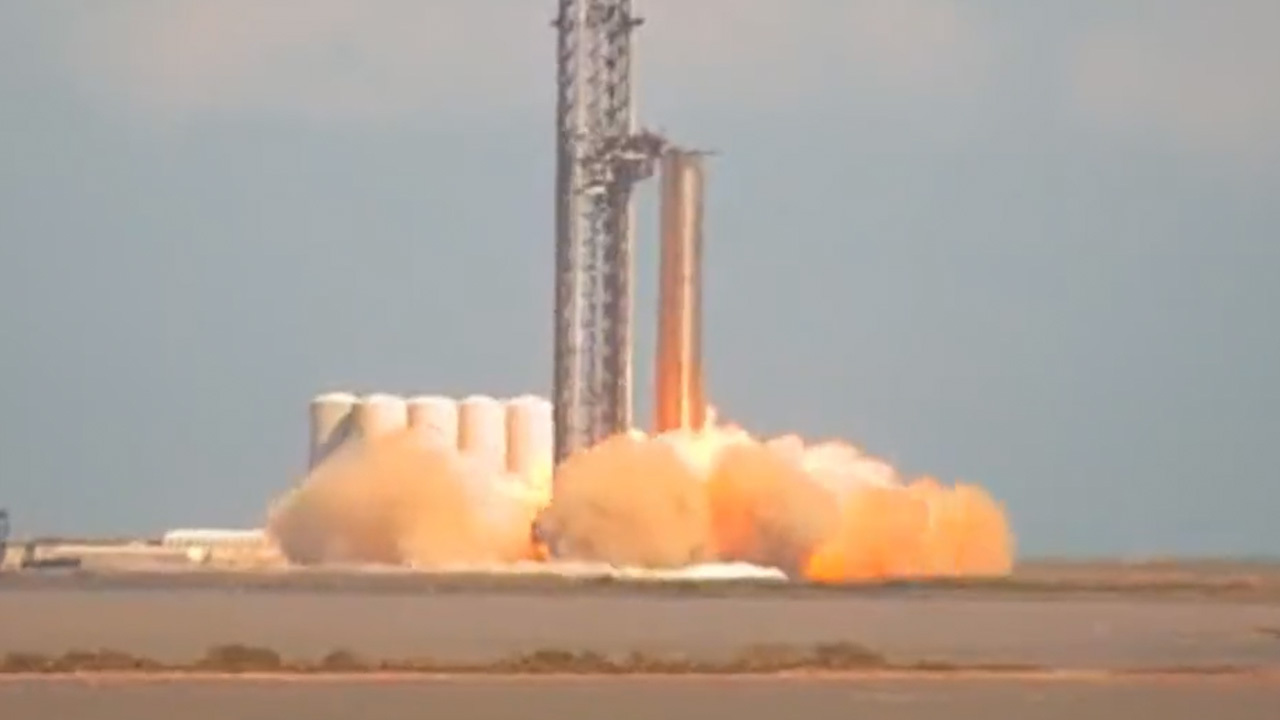SpaceX just conducted its most ambitious and powerful test to date with its Starship Mars rocket.
SpaceX ignited 14 Raptor engines on Booster 7, a prototype of Starship's first-stage Super Heavy rocket, during a "static fire" test today (Nov. 14) at Starbase, the company's South Texas facility.
"Full test duration of 14 engines," SpaceX founder and CEO Elon Musk tweeted shortly after the static fire, which took place at 1:51 p.m. EST (1851 GMT) and lasted about 10 seconds. The test was captured on video by observers such as NASASpaceFlight and Rocket Ranch Boca Chica.
Related: SpaceX fires up Starship Super Heavy booster again in long engine test

Static fires are common preflight trials in which a rocket's engines are briefly ignited while the vehicle stays anchored to the ground.
And SpaceX is gearing up for a flight with Starship — the program's first orbital test mission, which apparently will involve Booster 7 and an upper-stage prototype known as Ship 24. That landmark flight could launch before the end of the year, Musk has said.
Today's static fire could be a big step toward the orbital liftoff: It doubled the previous highest number of Raptor engines that SpaceX has ignited during a Starship engine test. But there's still considerable work to do to demonstrate Booster 7's flight readiness; the vehicle boasts a whopping 33 Raptors.
Get the Space.com Newsletter
Breaking space news, the latest updates on rocket launches, skywatching events and more!
Ship 24 sports six Raptor engines. SpaceX ignited all of them simultaneously during a Sept. 8 static fire.
SpaceX is developing Starship to take people and cargo to the moon and Mars, as well as perform a variety of other spaceflight tasks.
Starship prototypes have flown a handful of test flights to date, but none of them have gotten higher than about 6 miles (10 kilometers) in the sky. And none of them have involved a Super Heavy vehicle.
SpaceX has already inked a number of customers for Starship, including NASA, which picked the vehicle as the first crewed lander for its Artemis program of moon exploration. If all goes according to plan, astronauts will touch down on the lunar surface in 2025 or 2026 aboard Starship on the Artemis 3 mission.
Private customers have also signed up to ride Starship on missions around the moon (not down to its surface). Billionaire Yusaku Maezawa booked an entire flight, for example, and space tourism pioneer Dennis Tito and his wife Akiko bought two seats on a different mission.
Mike Wall is the author of "Out There" (Grand Central Publishing, 2018; illustrated by Karl Tate), a book about the search for alien life. Follow him on Twitter @michaeldwall. Follow us on Twitter @Spacedotcom or on Facebook.
Join our Space Forums to keep talking space on the latest missions, night sky and more! And if you have a news tip, correction or comment, let us know at: community@space.com.

Michael Wall is a Senior Space Writer with Space.com and joined the team in 2010. He primarily covers exoplanets, spaceflight and military space, but has been known to dabble in the space art beat. His book about the search for alien life, "Out There," was published on Nov. 13, 2018. Before becoming a science writer, Michael worked as a herpetologist and wildlife biologist. He has a Ph.D. in evolutionary biology from the University of Sydney, Australia, a bachelor's degree from the University of Arizona, and a graduate certificate in science writing from the University of California, Santa Cruz. To find out what his latest project is, you can follow Michael on Twitter.









